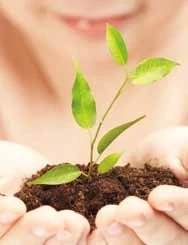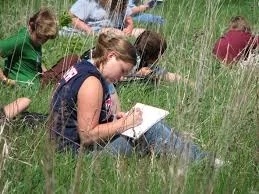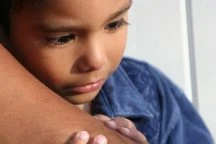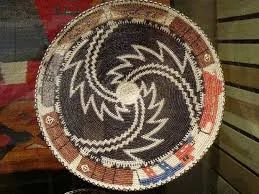We’re blessed that our work lets us regularly meet so many wonderful school teachers, counselors, OTs, nurses and others who work with children. You inspire us with your stories of using Yoga Calm so successfully and your shared commitment to the health and well-being of our youth. You share ideas for new applications of Yoga Calm and adaptations for its activities. You make Yoga Calm a better, richer and more effective program through your dedication and generosity.
Many have asked for Yoga Calm applications and adaptations in book form. So, inspired by and with input from you, Lynea and I have been putting together a series of curriculum guides. Our goal: to give you more ideas for using Yoga Calm in specific situations than we could ever hope to cover in any single two-day workshop. Our last post gave you a sneak peek at one of these new guides: Creating a Sustainable Future: Yoga Calm Environmental Education Curriculum Guide.
In Creating a Sustainable Future, we are guided by the principles and tools of ecopsychology and Yoga Calm. The basic idea of ecopsych is that mental health – or unhealth – can’t be understood solely in terms of social relations; we must also include the relationship of humans to other species and ecosystems. So we group activities according to the four elements, which are used in many cultures as a way of connecting to the natural world. Each section includes sample activities for observation and reflection, physical movement, storytelling and stewardship, and includes resources for information, material and opportunities to support the environmental lessons you’re teaching.
Last time, we shared a group of three “Earth” activities for observing and beginning to form connections between the self and the natural world – especially appropriate for kids who may not be all that accustomed to spending much time outdoors. Now, we’d like to share some more physical activities from the guide – both to give you more ideas for getting kids moving and to show how academic and character concepts can be taught through the physical activity – in this case through activities that relate to the fire element.
4 Fire Poses
Click each title for pose instructions
- Woodchopper
As the children do the pose, ask them, “Can you feel a sense of strength and power inside of you? This energy is similar to fire. We’re going to feel that fiery part of ourselves and practice letting out just the right amount.” Ask them how they can tell what the right amount of energy is for Woodchopper pose. Have a student demonstrate too much, then too little. Then have the group practice just the right amount together.
- Plank
Hold plank for 10 to 20 counts. Ask the kids, “Where are you feeling heat in the body? Now try lifting one leg a few inches off the floor. Does your body get warmer? Why do you think you get warm when the body is working hard?”
- Volcano Breath
Tell the students that you are going to practice being volcanoes: “Deep inside the earth it is so hot that rocks melt and become a thick flowing substance called magma. Because the magma is lighter than the hard rock, it rises up, and sometimes it pushes to the surface and erupts into a volcano. Some volcanoes are explosive and others are not. It depends on how thick the magma is. If the magma is thick and sticky, the volcano is explosive. If the magma is thin and runny, the volcano creates a slower moving lava flow. Try being an explosive volcano and a slower moving lava flow. There are three main kinds of volcanoes. Can you find out what they are called?”
- Warrior 1 & 2
Warriors learn to use their fierce fiery energy to help protect their families and their lands. Have the children stand in Warrior and think of ways in which they have used fiery words to express strong feelings. Ask: “Can you think of famous people who have used their fiery personalities to change something in the world?” or “Can you think of times when a person’s fiery personality got them into trouble?”
Adapted from the e-book Creating a Sustainable Future: Yoga Calm Environmental Education Curriculum Guide, available for download soon through the Yoga Calm Store.
Learn more about how Yoga Calm and environmental education activities can be used together to foster meaningful connections between personal and planetary health can be drawn, as well as a lifelong interest in science and increased environmental citizenry and stewardship. Join us for the next session of our Creating a Sustainable Future workshop, September 24 – 25 at Still Moving Yoga in Southwest Portland, Oregon.







